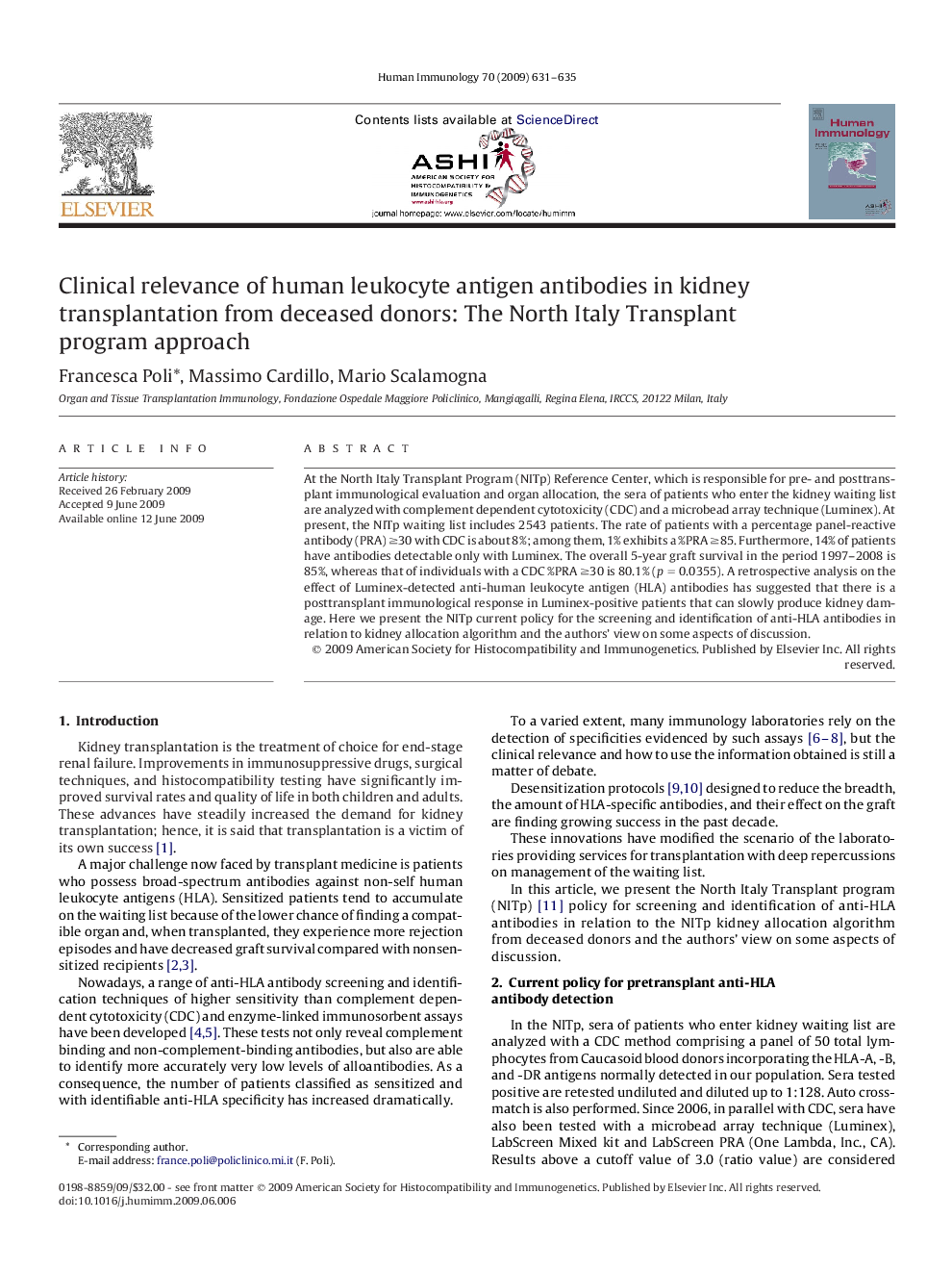| کد مقاله | کد نشریه | سال انتشار | مقاله انگلیسی | نسخه تمام متن |
|---|---|---|---|---|
| 3351387 | 1216424 | 2009 | 5 صفحه PDF | دانلود رایگان |

At the North Italy Transplant Program (NITp) Reference Center, which is responsible for pre- and posttransplant immunological evaluation and organ allocation, the sera of patients who enter the kidney waiting list are analyzed with complement dependent cytotoxicity (CDC) and a microbead array technique (Luminex). At present, the NITp waiting list includes 2543 patients. The rate of patients with a percentage panel-reactive antibody (PRA) ≥30 with CDC is about 8%; among them, 1% exhibits a %PRA ≥85. Furthermore, 14% of patients have antibodies detectable only with Luminex. The overall 5-year graft survival in the period 1997–2008 is 85%, whereas that of individuals with a CDC %PRA ≥30 is 80.1% (p = 0.0355). A retrospective analysis on the effect of Luminex-detected anti-human leukocyte antigen (HLA) antibodies has suggested that there is a posttransplant immunological response in Luminex-positive patients that can slowly produce kidney damage. Here we present the NITp current policy for the screening and identification of anti-HLA antibodies in relation to kidney allocation algorithm and the authors' view on some aspects of discussion.
Journal: Human Immunology - Volume 70, Issue 8, August 2009, Pages 631–635